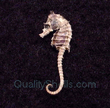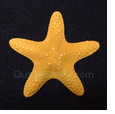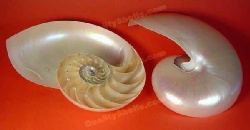What ocean creature has more legs than an octopus, but lives in a shell? |
Site NavigationHome PageArticles Where do shells come from? Is seawater similar to blood? Picking up seashells What are starfish? Do sharks have skeletons? What are sand dollars? What are seahorses? What are "flying fish"? How navigate on the ocean? More legs than an Octopus? Fish training Can I drink seawater? Additional Resources Seashell Identification Guide Conchologists of America Waikiki Seashells Training Fish Featured Products Marine GPS with MOB Key Privacy Policy Page Contact Us |
It's called a Chambered Nautilus, also known as the Pearl Nautilus or Emperor Nautilus. It's a very odd creature indeed. We've found a good picture of the live creature Here and you can see the complex internal structure of its shell at left. It has tentacles and a beak like an Octopus, yet lives in a shell. It has up to 90 tentacles, compared to only 8 for an octopus, but they're fairly small and don't have suckers. It uses the tentacles to move food closer to its beak. The tentacles have both a sense of touch and of taste. The Nautilus spends most of its life in deep water, rising nearer to the surface at night to feed on reefs and the creatures that inhabit them. It mainly eats hermit crabs, fish, and small bits of organic debris it finds. It, in turn, is preyed on by the Octopus, sharks, some species of fish, and sea turtles. Those predators are the reasons it spends most of its days in extremely deep waters. The most dangerous time of its day is when it rises into shallow waters to feed. The Nautilus is part of the cephalopod family, which also includes octopi and squids. Like them it uses a jet of water to move around. And like most of them, it can squirt out jets of ink -- like an underwater smoke-screen -- while it makes its escape from predators. It's mostly found in the Indian ocean and the Pacific ocean. Its unusual internal shell structure comes from how it grows. As the animal grows larger it grows a new larger section of the shell around its opening, then moves into that section and seals off the old compartment, leaving it filled with air or gas for buoyancy. It has tubes connected to the unused compartments so it can adjust the amount of air or water in them to rise or sink as it wishes. The Chambered Nautilus is a quite primitive organism. It's often referred to as a "living fossil." For example, its eye doesn't have a lens, just a very small opening that acts like a "pinhole camera." Its blood is very odd, also: While most sizeable organisms use hemoglobin (which is iron-based) to transfer oxygen around the body, the Nautilus (like all cephalopods) uses hemocyanin. That's a compound based on copper, not iron. As a result, its blood is blue-green. And, it's not a very efficient way to carry oxygen -- it's only about one-fifth as effective as the hemoglobin used in our blood, for example. There's likely some benefit to having that type of blood -- perhaps it avoids problems at the great depths where the Nautilus spends its days -- but whatever the reason is, it hasn't been identified yet. In case you were curious, the U.S.S. Nautilus, a nuclear-powered submarine, is named after this creature. The name "Nautilus" (which comes from a Greek word meaning "ship" or "sailor") has been worn by at least six ships, the earliest probably around 1812. |
 Murex Ramosus Seashell  Seahorse  Sand Dollar  Pearl Nautilus Seashell -- Split  Jungle Starfish  Lambis Chiragra Spider Conch Seashell |
